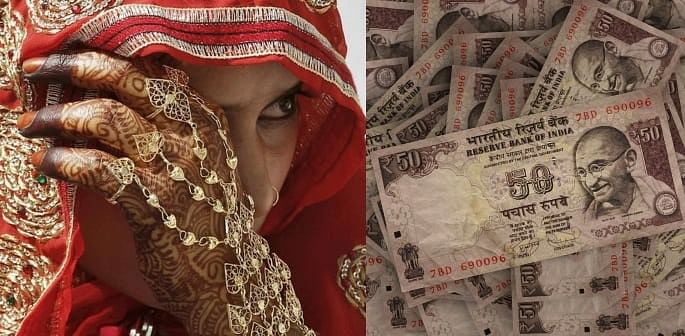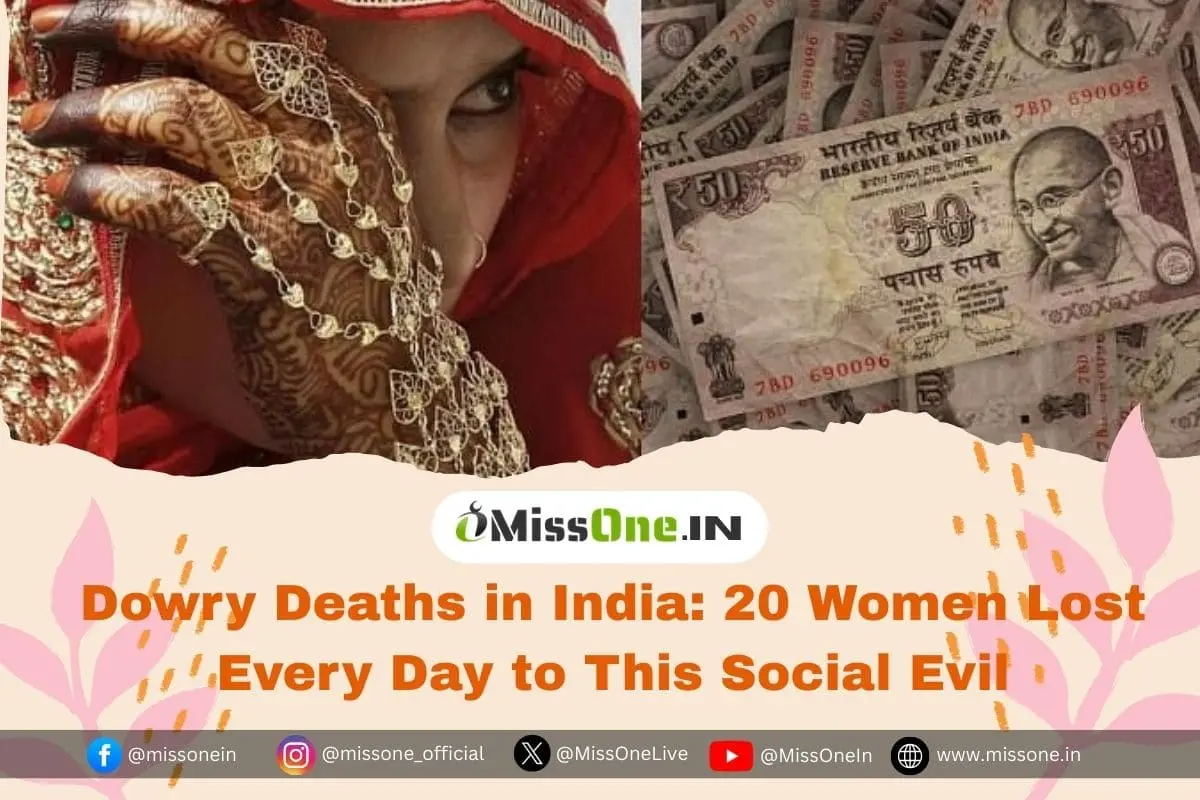On a warm August evening in Greater Noida, 28-year-old Nikki Bhati was rushed to a hospital with severe burn injuries. Within hours, she succumbed to her wounds. Her family alleged that she was set ablaze by her husband and in-laws after their demands for an additional dowry ₹36 lakh in cash and a luxury car were not met.
What makes Nikki’s case even more chilling is that her family had already given what many would consider excessive a Scorpio SUV, a motorcycle, and gold jewellery at the time of her marriage. Yet, greed has no limit.
Despite being outlawed in India for over six decades, dowry-related violence continues to claim thousands of lives every year. It’s a dark stain on our society, an ancient custom weaponised into a tool of harassment, extortion, and even murder.
This is not an isolated tragedy it is part of a larger, disturbing pattern that refuses to die down, even in modern India.
The Persistence of Dowry in Modern India
Dowry was originally meant as a gift a way for parents to provide for their daughter as she began a new life with her husband. Over time, however, it transformed into an unwritten demand, often turning into open extortion.
Even with the Dowry Prohibition Act of 1961, which criminalised the giving and taking of dowry, the practice thrives. Why?
- Social pressure: Many families fear that if they don’t comply, their daughter will be mistreated.
- Status symbol: In some communities, lavish dowries are flaunted as a marker of wealth and prestige.
- Gender inequality: Deep-rooted patriarchy views daughters as financial liabilities.
The ugly truth is that in many households, dowry is not a cultural relic it’s a calculated transaction, a negotiation with human lives at stake.
Recent Shocking Cases That Made Headlines
While the Nikki Bhati case from Uttar Pradesh has dominated headlines recently, similar stories unfold across India every month.
1. The Nikki Bhati Tragedy – Uttar Pradesh
Nikki’s death sparked outrage not only because of its brutality but also because of an undated video that surfaced showing her husband beating her, allegedly over dowry. Her death became a rallying point for women’s rights activists demanding stricter action.
2. Pilibhit, Uttar Pradesh – April 2023
A woman was allegedly burned alive by her husband and in-laws for failing to bring a motorcycle and gold jewellery. The horror of this case barely made it beyond local news, but it mirrors thousands of others.
3. Tamil Nadu – Ridhanya’s Death
Just two months after her wedding, Ridhanya, a newlywed, died by suicide. Despite receiving 800 grams of gold and a Volvo car worth ₹70 lakh, her in-laws allegedly harassed her for more.
4. Rajasthan – Teacher and Daughter’s Death
In Jodhpur, a school teacher reportedly set herself and her three-year-old daughter on fire after enduring years of dowry-related harassment. This case highlights how such abuse can destroy entire families.
Each of these tragedies is not merely a statistic it’s a reminder of lives lost, dreams crushed, and families shattered.
The Alarming Numbers: NCRB Data Tells a Grim Story
According to the National Crime Records Bureau (NCRB):
- 6,450 dowry deaths were reported in 2022.
- On average, 20 women die every day due to dowry-related violence.
- Between 2017 and 2022, 35,493 dowry death cases were recorded nearly 6,000 cases annually.
While there is a slow decline from 7,466 cases in 2017 to 6,450 in 2022 experts warn that underreporting remains rampant due to social stigma, family pressure, and fear of retaliation.
States with the Highest Numbers
Dowry deaths are not evenly spread across India. The five states that account for nearly 70% of cases are:
- Uttar Pradesh – 2,138 cases in 2022 (about one-third of the total)
- Bihar – 1,057 cases
- Madhya Pradesh – 518 cases
- Rajasthan – 447 cases
- West Bengal – 384 cases
Urban vs Rural
While dowry deaths are more common in rural areas, cities are far from immune.
- Delhi reported the highest number of dowry deaths among metro cities from 2017–2022.
- Other hotspots include Kanpur, Bengaluru, Lucknow, and Patna.

The Investigation & Conviction Gap
One of the most distressing aspects of dowry death cases is the low conviction rate.
- Of around 7,000 cases reported annually, only about 4,500 are charge-sheeted.
- 67% of pending cases at the end of 2022 had been under investigation for over six months.
- Out of 6,500 cases sent for trial each year, only ~100 lead to convictions less than 2%.
- As of December 2022, over 60,000 cases were pending in courts.
Why So Few Convictions?
Supreme Court lawyer Seema Kushwaha points to several reasons:
- Groom’s families often claim the dowry items were “gifts, not demands.”
- Fear of social stigma discourages witnesses from testifying.
- Narratives around the “misuse” of dowry laws dilute genuine cases.
The result? Many culprits walk free, while victims’ families are left without justice.
The Legal Framework
Indian law has provisions to combat dowry-related crimes:
1. Dowry Prohibition Act, 1961
- Makes giving or taking dowry a punishable offence.
- Penalty: 5 years imprisonment + fine of ₹15,000 or the value of the dowry.
2. Section 304B IPC (Now Section 80 BNS)
- Covers dowry deaths where a woman dies under unnatural circumstances within 7 years of marriage.
- Punishment: 7 years to life imprisonment.
3. Section 498A IPC (Now Section 85 BNS)
- Deals with cruelty by husband or relatives, including dowry harassment.
- Includes mental and physical harm or harassment with intent to obtain dowry.
While these laws are strong on paper, loopholes, slow trials, and social complicity make enforcement weak.
Why the Problem Persists
Even with laws in place, dowry deaths remain common because:
- Patriarchal mindset: Women are still seen as burdens in many communities.
- Economic greed: Marriages are treated as opportunities for wealth accumulation.
- Fear of divorce or abandonment: Many women tolerate harassment to avoid social shame.
- Pressure to stay silent: Families discourage women from speaking out to “save face.”
Psychological & Social Impact
Dowry harassment is not just a legal issue it’s a mental health crisis. Victims often suffer from:
- Severe depression and anxiety
- Isolation from their natal families
- Loss of self-worth
- Increased risk of suicide
Children in such homes grow up witnessing violence, leading to long-term trauma and an unhealthy perception of marriage.
The Way Forward: Stopping the Cycle
Ending dowry deaths requires both legal and cultural change.
1. Stricter Law Enforcement
- Fast-track courts for dowry death cases.
- Witness protection programs.
2. Public Awareness Campaigns
- Nationwide campaigns similar to Beti Bachao, Beti Padhao.
- Community-level education on women’s rights.
3. Empowering Women
- Financial independence through skill development.
- Encouraging women to speak up without fear.
4. Role of NGOs & Media
- NGOs can offer counselling, legal help, and shelter.
- Media can shed light on cases that would otherwise be buried.
Conclusion: A Call for Change
Dowry deaths are not just “family matters” they are crimes against humanity. Every statistic hides a story of betrayal, abuse, and tragedy.
We must stop treating dowry as a “tradition” and recognise it for what it is: a social evil that kills. It will take a combined effort lawmakers, law enforcers, communities, and individuals to break this cycle.
The next time we hear of a dowry death, let’s not dismiss it as “just another case.” It could be our neighbour, our friend, our sister.
Change begins when silence ends.

